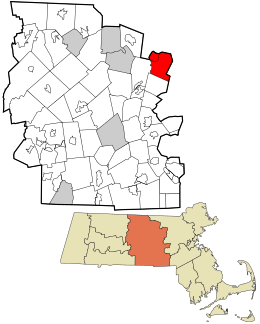Harvard, Massachusetts
| Harvard, Massachusetts | ||
|---|---|---|
| Town | ||

Town Hall
|
||
|
||
 Location in Worcester County and the state of Massachusetts. |
||
| Coordinates: 42°30′00″N 71°35′00″W / 42.50000°N 71.58333°WCoordinates: 42°30′00″N 71°35′00″W / 42.50000°N 71.58333°W | ||
| Country | United States | |
| State | Massachusetts | |
| County | Worcester | |
| Settled | 1658 | |
| Incorporated | 1732 | |
| Government | ||
| • Type | Open town meeting | |
| • Town Administrator |
Timothy P. Bragan | |
| • Board of Selectmen |
Alice von Loesecke Ronald V. Ricci Ken Swanton Stu Sklar Lucy Wallace |
|
| Area | ||
| • Total | 27.0 sq mi (69.9 km2) | |
| • Land | 26.4 sq mi (68.3 km2) | |
| • Water | 0.6 sq mi (1.6 km2) | |
| Elevation | 421 ft (128 m) | |
| Population (2010) | ||
| • Total | 6,520 | |
| • Density | 240/sq mi (93/km2) | |
| Time zone | Eastern (UTC-5) | |
| • Summer (DST) | Eastern (UTC-4) | |
| ZIP code | 01451 | |
| Area code(s) | 351 / 978 | |
| FIPS code | 25-28950 | |
| GNIS feature ID | 0619482 | |
| Website | www.harvard.ma.us | |
Harvard is a town in Worcester County, Massachusetts. The town is located 25 miles west-northwest of Boston, in eastern Massachusetts. A farming community settled in 1658 and incorporated in 1732, it has been home to several non-traditional communities, such as Harvard Shaker Village and the utopian Transcendentalist center Fruitlands. Today it is an affluent residential town noted for its excellent public schools, with its students consistently ranking in the state's top ten test results in English and math. The population was 6,520 at the 2010 census.
Europeans first settled in what later became Harvard in the 17th century, along a road connecting Lancaster with Groton that was formally laid out in 1658. There were few inhabitants until after King Philip's War, in which Groton and Lancaster were attacked and substantially destroyed. Over the next 50 years the population grew until it had reached a point adequate to support a church. A new town including parts of Lancaster, Groton, and Stow was incorporated in 1732, subject to the proviso that the inhabitants "Settle a learned and Orthodox Minister among them within the space of two years and also erect an House for the publick Worship of God." It is uncertain how the town obtained its name, though the Willard family, among the first settlers and the largest proprietors in the new town, had several connections to Harvard College.
In 1734, the town was considered to have five districts or villages. These were Oak Hill, Bare Hill, Still River, Old Mill and Shabikin, present day Devens.
The town economy was primarily based on agriculture until the middle of the 20th century. This past is most prominently visible in the number of apple orchards. It is now a residential town within reach, for example, of the technology companies outside of Boston. It has had a relatively quiet history, but has attracted several "non-traditional" communities that have given its history some flavor.
...
Wikipedia

